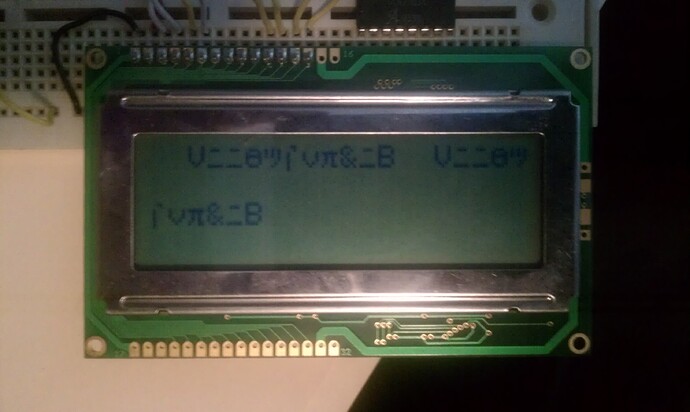Hello I have been draw to the arudino world its been fun so far!
just got my board a couple days ago, I been doing all the examples.
Now I am trying to do the LCD Hello World example.
It prints wierd stuff to the screen
The screen I have is a Seiko Instruments 20x4 5x7 char model #L2034-00J I got it free so why not use it ![]() I do have the data sheet for it.
I do have the data sheet for it.
The only time I can see Hello world is when I use this code below... but modified one of his lines of code to say lcd.print("Hello World"); instead of lcd.print(thisLetter, BYTE); because when I compiled (using Visual Studio 2010) it reported BYTE is not used no more use Serial.write this confused me so I just threw "hello world" in and it does print hello world and scrolls it thru the screen witha bunch of H's)
/*
LiquidCrystal Library - setCursor
Demonstrates the use a 16x2 LCD display. The LiquidCrystal
library works with all LCD displays that are compatible with the
Hitachi HD44780 driver. There are many of them out there, and you
can usually tell them by the 16-pin interface.
This sketch prints to all the positions of the LCD using the
setCursor(0 method:
The circuit:
- LCD RS pin to digital pin 12
- LCD Enable pin to digital pin 11
- LCD D4 pin to digital pin 5
- LCD D5 pin to digital pin 4
- LCD D6 pin to digital pin 3
- LCD D7 pin to digital pin 2
Library originally added 18 Apr 2008
by David A. Mellis
library modified 5 Jul 2009
by Limor Fried (http://www.ladyada.net)
example added 9 Jul 2009
by Tom Igoe
modified 22 August 2009
by Tom Igoe
*/
// include the library code:
#include <LiquidCrystal.h>
// these constants won't change. But you can change the size of
// your LCD using them:
const int numRows = 4;
const int numCols = 20;
// initialize the library with the numbers of the interface pins
LiquidCrystal lcd(12, 11, 5, 4, 3, 2);
void setup() {
// set up the LCD's number of rows and columns:
lcd.begin(numRows, numCols);
}
void loop() {
// loop from ASCII 'a' to ASCII 'z':
for (int thisLetter = 'a'; thisLetter <= 'z'; thisLetter++) {
// loop over the rows:
for (int thisRow= 0; thisRow < numRows; thisRow++) {
// loop over the columns:
for (int thisCol = 0; thisCol < numCols; thisCol++) {
// set the cursor position:
lcd.setCursor(thisCol,thisRow);
// print the letter:
lcd.print("Hello World");
//lcd.print(thisLetter, BYTE); (orignal code used this line but I was getting a error saying BYTE is not used no more use Serial.write this confused me so I just threw "hello world" in and it does print hello world and scrolls it thru the screen witha bunch of H's)
delay(200);
}
}
}
}
So my wiring is correct, and I used the wiring shown in the example for hello world, but how can I do simple words to the screen rather then using the above code. I only tried this code because the LiquidCrystal.h does not define my screen which uses 5x7 dots.
any help would be great. Thanks
I have spent alot hours searching before I asked this question, so just need a bump in the right direction.
Thanks
Brian




